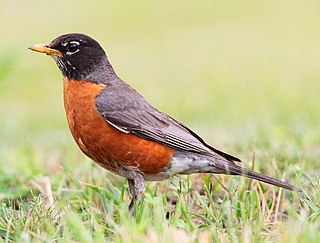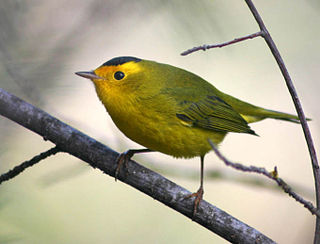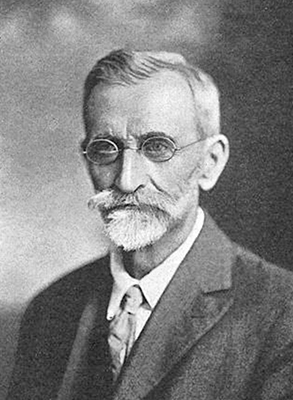
The American robin is a migratory bird of the true thrush genus and Turdidae, the wider thrush family. It is named after the European robin because of its reddish-orange breast, though the two species are not closely related, with the European robin belonging to the Old World flycatcher family. The American robin is widely distributed throughout North America, wintering from southern Canada to central Mexico and along the Pacific coast.

Oology, , is a branch of ornithology studying bird eggs, nests and breeding behaviour. The word is derived from the Greek oion, meaning egg. Oology can also refer to the hobby of collecting wild birds' eggs, sometimes called egg collecting, birdnesting or egging, which is now illegal in many jurisdictions.

The northern wheatear or wheatear is a small passerine bird that was formerly classed as a member of the thrush family Turdidae, but is now more generally considered to be an Old World flycatcher, Muscicapidae. It is the most widespread member of the wheatear genus Oenanthe in Europe and North and Central Asia.

Steller's jay is a bird native to western North America and the mountains of Central America, closely related to the blue jay found in eastern North America. It is the only crested jay west of the Rocky Mountains. It is also sometimes colloquially called a "blue jay" in the Pacific Northwest, but is distinct from the blue jay of eastern North America. The species inhabits pine-oak and coniferous forests.

The short-billed dowitcher, like its congener the long-billed dowitcher, is a medium-sized, stocky, long-billed shorebird in the family Scolopacidae.

The mountain bluebird is a migratory small thrush that is found in mountainous districts of western North America. It has a light underbelly and black eyes. Adult males have thin bills and are bright turquoise-blue and somewhat lighter underneath. Adult females have duller blue wings and tail, grey breast, grey crown, throat and back. In fresh fall plumage, the female's throat and breast are tinged with red-orange which is brownish near the flank, contrasting with white tail underparts. Their call is a thin 'few' while their song is a warbled high 'chur chur'. The mountain bluebird is the state bird of Idaho and Nevada. This bird is an omnivore and it can live 6 to 10 years in the wild. It eats spiders, grasshoppers, flies and other insects, and small fruits. The mountain bluebird is a relative of the eastern and western bluebirds.

The pine grosbeak is a large member of the true finch family, Fringillidae. It is the only species in the genus Pinicola. It is found in coniferous woods across Alaska, the western mountains of the United States, Canada, and in subarctic Fennoscandia and across the Palearctic to Siberia. The species is a frugivore, especially in winter, favoring small fruits, such as rowans. With fruit-crop abundance varying from year to year, pine grosbeak is one of many subarctic-resident bird species that exhibit irruptive behavior. In irruption years, individuals can move long distances in search of suitable food supplies, bringing them farther south and/or downslope than is typical of years with large fruit crops.

Wilson's warbler is a small New World warbler. It is greenish above and yellow below, with rounded wings and a long, slim tail. The male has a black crown patch; depending on the subspecies, that mark is reduced or absent in the female. It breeds across Canada and south through the western United States, and winters from Mexico south through much of Central America. It is a very rare vagrant to western Europe.

Say's phoebe is a passerine bird in the tyrant flycatcher family, Tyrannidae. A common bird across western North America, it prefers dry, desolate areas. It was named for Thomas Say, an American naturalist.

The orange-crowned warbler is a small songbird of the New World warbler family.

Austin Roberts was a South African zoologist. He is best known for his Birds of South Africa, first published in 1940. He also studied the mammalian fauna of the region: his work The mammals of South Africa was published posthumously in 1951. The 7th edition of Roberts' Birds of Southern Africa which appeared in 2005, is the standard work on the region's birds.

Annie Montague Alexander was an explorer, naturalist, paleontological collector, and philanthropist.

Joseph Grinnell was an American field biologist and zoologist. He made extensive studies of the fauna of California, and is credited with introducing a method of recording precise field observations known as the Grinnell System. He served as the first director of the Museum of Vertebrate Zoology at the University of California, Berkeley from the museum's inception in 1908 until his death.
The Western Foundation of Vertebrate Zoology (WFVZ) is a non-profit charitable organization based in Camarillo, California focused on research and education on bird conservation. It hosts a natural history collection of over 200,000 sets of bird eggs representing approximately 4,000 species, around 20,000 nests, and over 56,000 bird study skins from around the world.
Louis Dufresne was a French ornithologist and taxidermist.

Richard Charles Banks was an American author, ornithologist and Emeritus Research Zoologist on staff with the Patuxent Wildlife Research Center run by the U.S. Geological Survey and stationed at the Smithsonian Institution in Washington, D.C. He is the founder of the Ornithological Council and known for his study of the migratory systems, patterns, and geographic variations of North American birds, primarily focusing on the research and analysis of Greater White-fronted Geese.

Frank Stephens (1849–1937) was an American naturalist and the first director of the San Diego Natural History Museum. He was considered the pioneer naturalist of the Southwest, studying the mammals and birds of California, Arizona, and Baja California. His personal specimen collection of 2,000 birds and mammals, donated in 1910, was the foundation of the San Diego Natural History Museum's Birds & Mammals Department, now a major resource on bird and mammal species of western North America, including Baja California.
Richard S. Crossin (1933–2003) was a collector and ornithologist. He was born in 1933 and started collecting specimens in 1959, continuing to collect until around 1973, according to the Western Foundation of Vertebrate Zoology's "Field Notes of Richard Crossin" and online database. The Western Foundation of Vertebrate Zoology houses about 195 egg and nest sets collected by or for Crossin from Kenya, Tanzania, Uganda, Somalia, Mexico, Florida and Arizona. Crossin owned a private museum in Tucson, Arizona. His personal foundation was called the Neotropical Ornithological Foundation, which held 2,266 egg sets from additional states in North America and additional countries such as Argentina, Bolivia, Central and Southern Pacific Ocean, Australia, and Europe. Crossin died in 2003.
Charles Sidney Thompson was an American ornithologist and philatelist.
John G. Williams was a Welsh ornithologist. His collections date from 1954 to 1986, collecting mainly in East Africa and the eastern United States. The Western Foundation of Vertebrate Zoology in Camarillo, California, houses a lot of his aviary materials, in addition to 190 of Williams' egg collections.














